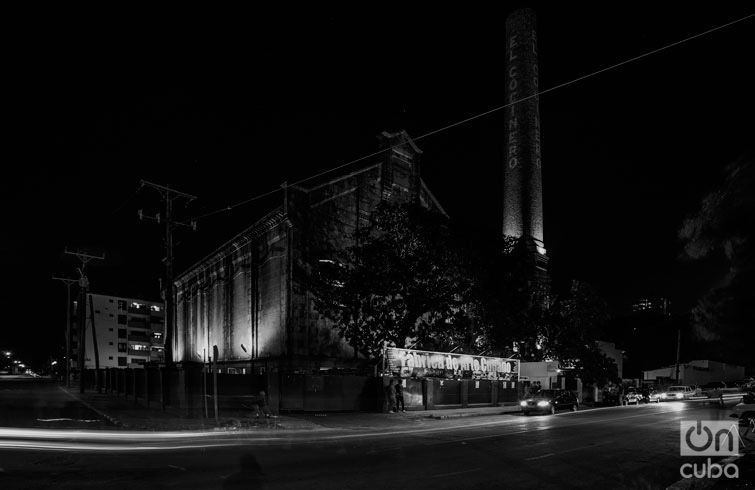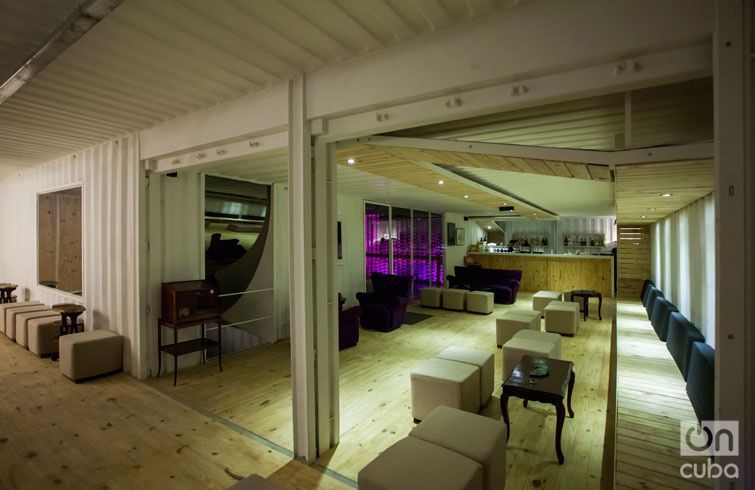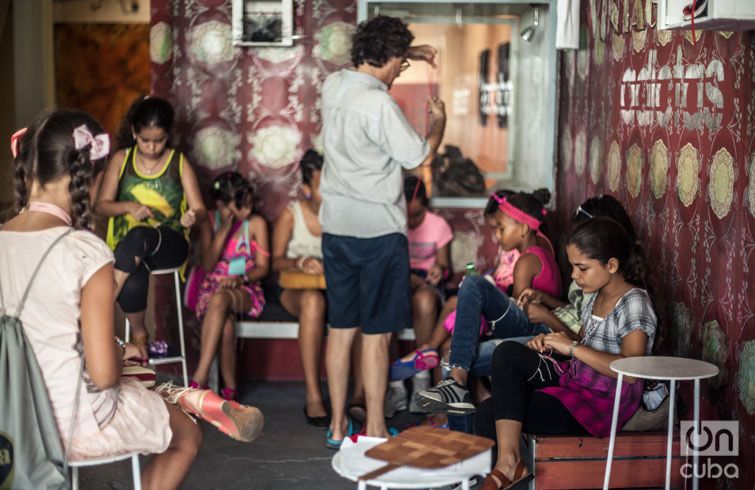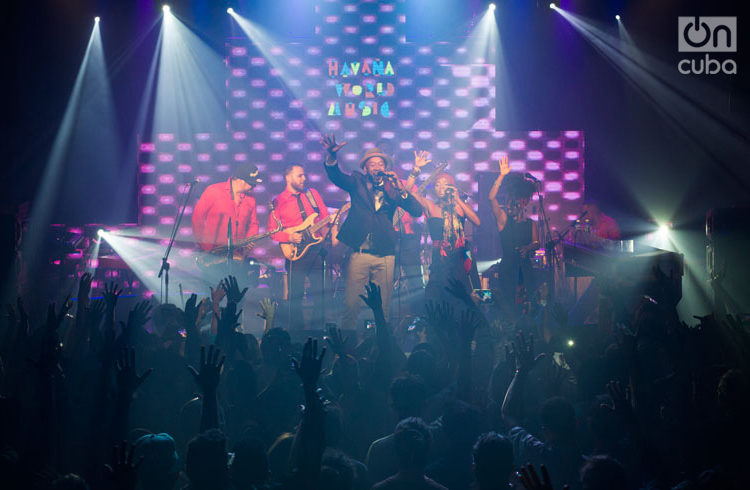I was able to interview X Alfonso in January 2014, when the FAC was still a wish sprinkled with fresh cement on giant bare walls. We were walking through the spaces recovered from the ruins of an old factory in Havana. X explained the sketch of his dream, from floor to ceiling; he looked elated. “It can’t come out bad,” he told us. “This is like one’s own home, to which one gives the best vibe. It can’t come out bad,” he highlighted.
Three years later we all know that the FAC has been more than a good idea.
For me the Fábrica continues being our own home. I say “our” and I think about the entire team – as we affectionately call them: the Fac-in-Band – and about the public that has made the Fábrica its home.
This big space actually has become small for us. Expanding it a bit more would give us many possibilities for emerging exhibitions or concerts by very famous artists who tell us they want to play in the FAC, and the concert hall only has capacity for 250 persons. Just imagine how I can feel when artists like Usher, Dave Matthew, Chucho Valdés and others are performing there, they who could fill a theater like the Karl Marx….

A very powerful memory has marked the life of the FAC. Cuban trova singer Santiago Feliú died three days before giving his first concert in the FAC.
Oof! I knew Santi since I was 7 years old. He was a close friend of my parents and he was always at our place. When they gave us the factory for the project, we had the idea of making a video clip. I proposed shooting it in one of these empty and intact spaces of the factory, perfect for the song “Iceberg,” because of the content of that song’s lyrics.
He was a genius, as an instrumentalist and as a poet, and I focused on him. We decided to use only two lights, a stool, and him with his guitar. That was the video.
After the filming we went around that entire abandoned place and he said to me: “When the Fábrica is finished I’ll only play here, this will be my home.”
Santi used to come around to the Fábrica a lot before the opening, which was going to be on February 13, 2014. One day before, on February 12, he passed away.
Silvio Rodríguez inaugurated the FAC singing Santi’s “Para Bárbara.” And he shouted “Y no te dejaremos ir” (And we won’t let you go) after the song’s last chord. The following day, in his memory, we had a big concert where we cried his songs. That same day the Santiago Feliú Concert Hall was inaugurated in Section 1. And that’s where he lives. Each anniversary we all get together and sing his songs.

FAC is recognized today as one of the most ambitious cultural projects in Cuba. In addition to the Cubans, thousands of visitors have made it a required site, because Havana’s nights are impregnated with FAC. Can it grow more? Up to where do you want to go?
Of course you can grow more every day; it’s the philosophy that we take to the extreme. We try to upgrade ourselves every day, we learn a lot from all those who pass through the FAC with their criticisms, the good and the bad ones.
We also grow with the community works. With the children and adolescents we created greater interest in art and its understanding. This summer already more than 1,600 children attended the workshops. That makes us grow.
We don’t know up to where we want to get, but I assure you that we enjoy every second of the way.
But FAC not only arouses admiration. Especially in Cuba, some sectors and in some public spaces the project has been viewed with suspicion because they consider it elitist, far from part of the Cuban people that have less resources. What is your answer to these assessments?
Everybody has a right to their opinion. At times they talk out of ignorance, others out of repetition and others out of envy. It’s as clear as that. When something starts being successful in Cuba, instead of feeling proud and being part of that, the bugging and bad vibes begin.
When the Fábrica opened, the price for the ticket at 50 Cuban pesos was always taken into account and thought out very well, as well as what was consumed inside the space. Especially to turn it into a place for everybody.
We based it on a common experience of the team of when we were 20 or 25 and we would go from Coppelia to the Malecón and from the Malecón to Coppelia. Later to G Street and from there finally to go sleep in Zapata and C – the police station – because we had left our ID card at home. The phrase “¿Cómo que pa’l camión?” (What do you mean to the truck?) comes from that.
How many of us would have wanted to have a FAC to spend the night?
Now ask a kid whose idol is a regueton musician how much the ticket costs to see him? With that philosophy and the study of the prices of nightspots in Havana, state-run as well as private, we realized that we were the most economical option for everybody.
The price of the other places depends on the artists who play, and they vary from a minimum of 15 CUC up to 100 CUC, not including what you consume. The ticket price depends on the artist’s popularity, a popularity precisely given by the people who have the less resources.
Now I ask myself: how come some sectors and some public spaces view this project with suspicion? “In short, the sea….” You can be in the Fábrica from 8:00 p.m. to 3:00 a.m. with a program of music bands, dance and theater groups, visual art, photography, fashion, cinema, architecture, design exhibitions. And it costs 50 Cuban pesos! Let’s not talk of the agricultural markets…. Who is elitist then?

In the future, could there be another FAC venue in Havana? What aspects would you repeat and which not? What would be perfectible in this project?
I don’t believe we’re going to have another venue. FAC is and will be unique because what makes it special is the effort and the love of the entire team that works there. It’s a family that gives it all in that space and, believe me, it’s not easy. It’s a son who starts growing up and learning to be better, with obstacles that are evaded and others that you bump into. At times we ask ourselves how we are able to do certain things. With a great deal of sacrifice and with our own resources – something that few are willing to do: give something without asking for something in return.
Everything can be perfected and we are working on that every day.
What has the FAC contributed to X Alfonso as a musician, as an artist? Has it been a reason for not concentrating on your own work? What is the personal balance?
For me the Fábrica is like making five records a year, 10 video clips and a load of work that I enjoy, of course. FAC is a symphony in constant creation and reflection where I share experiences similar to those I have to compose a song, film or make a good photo. I consider it a work of art, a painting that never ends.
Even so I find time to continue composing, writing and doing art. I never abandoned my career; on the contrary, with everything I have learned now it is much stronger than before.











